Skier Darin Haworth of Summit to Shore Chiropractic enjoying fresh powder in December- Photo by: Local Freshies®
The 2019/20 ski season has been EPIC… everywhere except Lake Tahoe. Even in places like New Mexico, typically on the same storm track as Lake Tahoe, have been blessed with above average snowfall. The question that’s been rattling in my brain emotionally, spiritually, and psychologically – “Is the 2019/20 Tahoe snow season as of now one of the worst ever in Lake Tahoe’s history?”
The 2010’s – A Decade Of Big Snows & Big Droughts
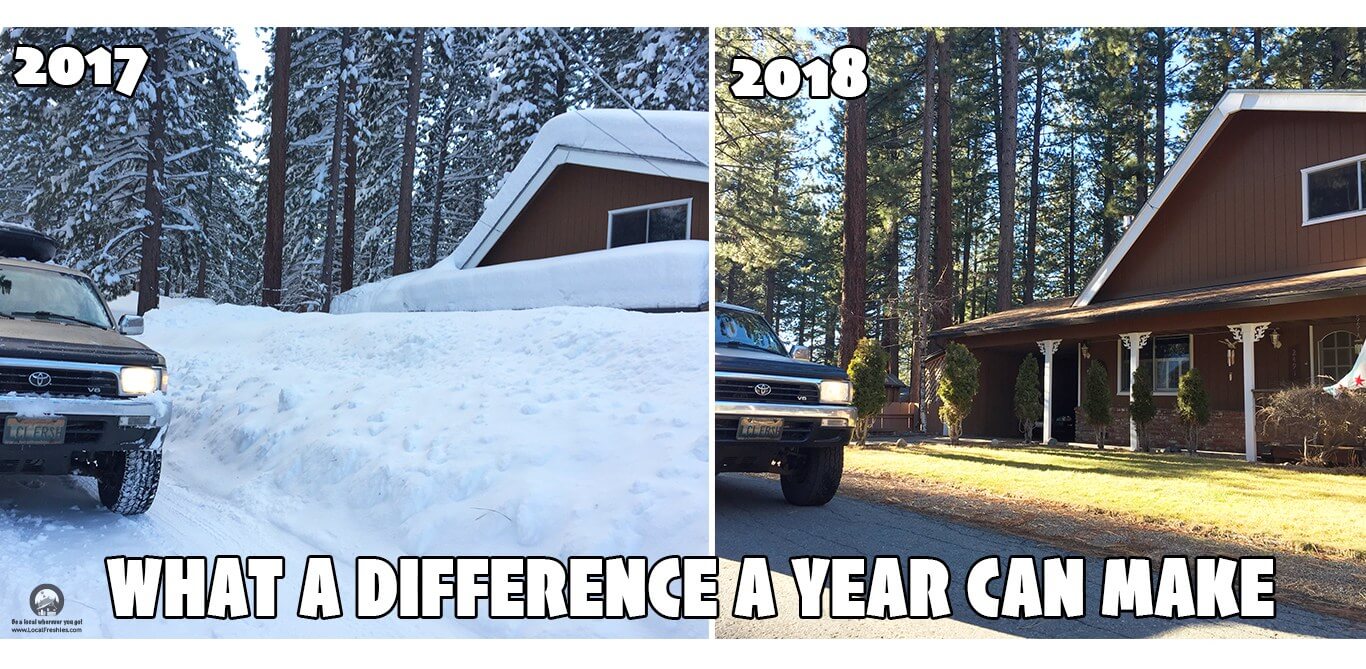
Before we delve into this question, let’s look back at the last ten years. Depending on if you’re a glass half full or pint half empty type of Joe or Jane, the 2010’s are the prime example of Tahoe’s feast or famine cycle but on a grand scale. One thing all of them had in common: record setting. For every big winter, like 2016/17, there was a famine, like 2014/15. A true tit-for-tat.
How This Season Compares To The Worst Winters
As of the end of February, how is this season stacking up? Well, it’s made it into the top 10 worst winters in 50 years alongside its companions from the 2010’s. As you can see below depending on where you call “home” in Lake Tahoe, the season is either MUCH better (i.e. Heavenly or Squaw) or just as rough (Mt. Rose) as the other worst winters in Lake Tahoe’s history.

How The Snow Arrived
Numbers help to get a “gist” of things, but to really get the full story of how winters compare, let’s take a look at how the snow arrived during these winter seasons. Some storms come in warm (Pineapple Express), others cold (Alaska low), or there’s just nothing at all (the evil Blob). Lake Tahoe tests the mental fortitude of the hardiest skier/snowboarder. When all stars align though… it’s heaven.
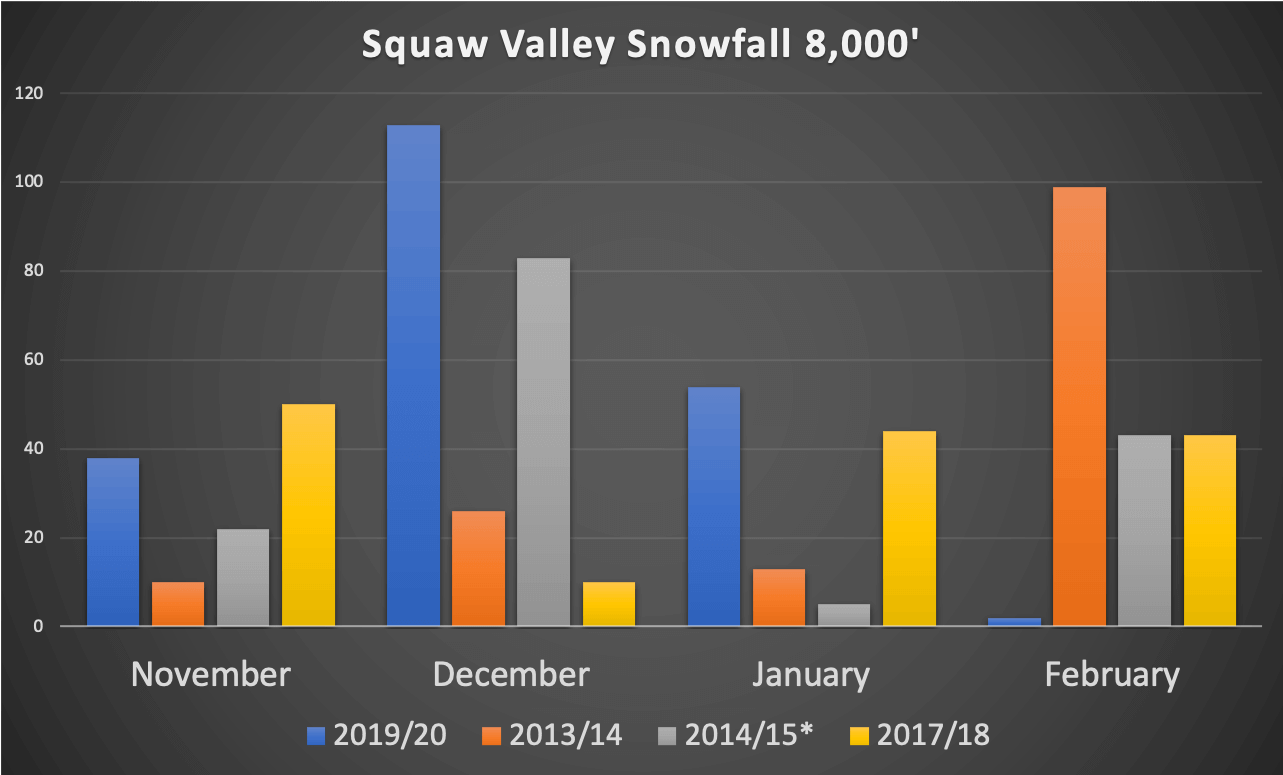
Note: These synopses are only through February 28th.
2013/14 Season
There was less than one foot of snow in late November, about a foot in early December, 1+ foot of light snow mid-month and a few inches before Christmas. For nearly four weeks not a single snowflake fluttered until the end of January where twelve inches fell. During the first week of February, 5 feet fell on the Sierra Crest with 3 feet elsewhere. Unfortunately, substantial rain fell at low elevation. For example, Squaw got 63″ up high but only 10″ at its base. Another foot fell at the end of February.
2014/15 Season
*Note: This winter was on track for being the WORST winter on record for all of North America since 1980/81.
A few inches fell in November, but it followed record warmth the 1st part of December with rain to the summits. That was then followed by three December storms before Christmas in the 1-2 foot range plus a couple smaller events. There was up to a foot of light snow during the holidays, but January was record dry with just a few inches near the end of the month. The early February Pineapple storm had high and fluctuating snow levels in the Sierra. Check out our article “Drought… no bueno!” to read about just how brutal this season was to small businesses in ski country.
2017/18 Season

November was a story of WARM storms with most of the them having a snow level of 8,000 feet or higher. Then December was pretty dry with less than a foot of snow falling. Two early January storms provided some refresh but the storms continued warm (above 8,500 feet) where less than a foot fell except for Kirkwood. Second half of January snowfall was about 2 feet in Tahoe. The first half of February was mostly warm and dry. 1.5 – 3 feet of snow fell during the cold second half of February.
2019/20 Season
November started slow but 2-3 feet fell over Thanksgiving with another 2-3 feet later that weekend. The storms continued with 3-4 feet during the first week of December. Unfortunately, low elevations at Tahoe saw rain. That was then followed by another 2 feet in mid-December. Yet again, light rain degraded surfaces below 8,000 feet at New Year’s but a few inches of snow fell later north of Tahoe. A few modest January storms totaled 3+ feet at some Tahoe areas but much less on the southern part.
2019/20 Is Trending Towards Record Setting
As we all know, February has been dismal. Warm temps and almost no snow. Per Bryan Allegretto of Open Snow, no matter what happens the rest of the 2019/20 winter, this February will go down in infamy. It will be the least snowiest February in the last 50 years. Definitely a sharp contrast to the 2018/19 February where it was the SNOWIEST February on record.
Will We Have A Miracle March?
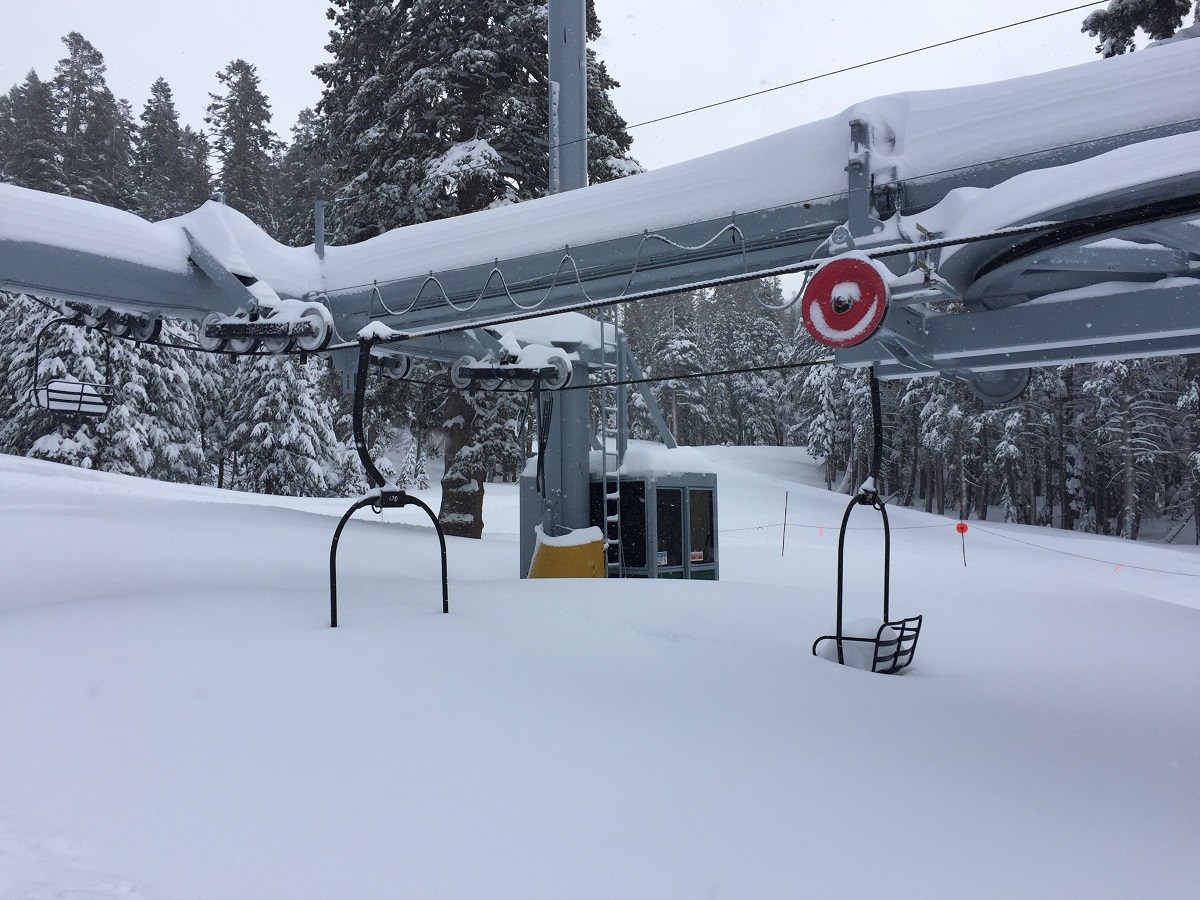
As usual, it depends if you’re an optimist or a pessimist. The 1st week of March doesn’t look like it’s going to provide us any big storms. But when it comes to Tahoe, we can get all of our snow in just a few days… so you never know. It might be time to bring out the lucky charms. Wash those cars. Put away your gear for the summer. Bring out the boats! If you have any ideas on how to bring back the snow, let us know. We’ll start doing it as well.





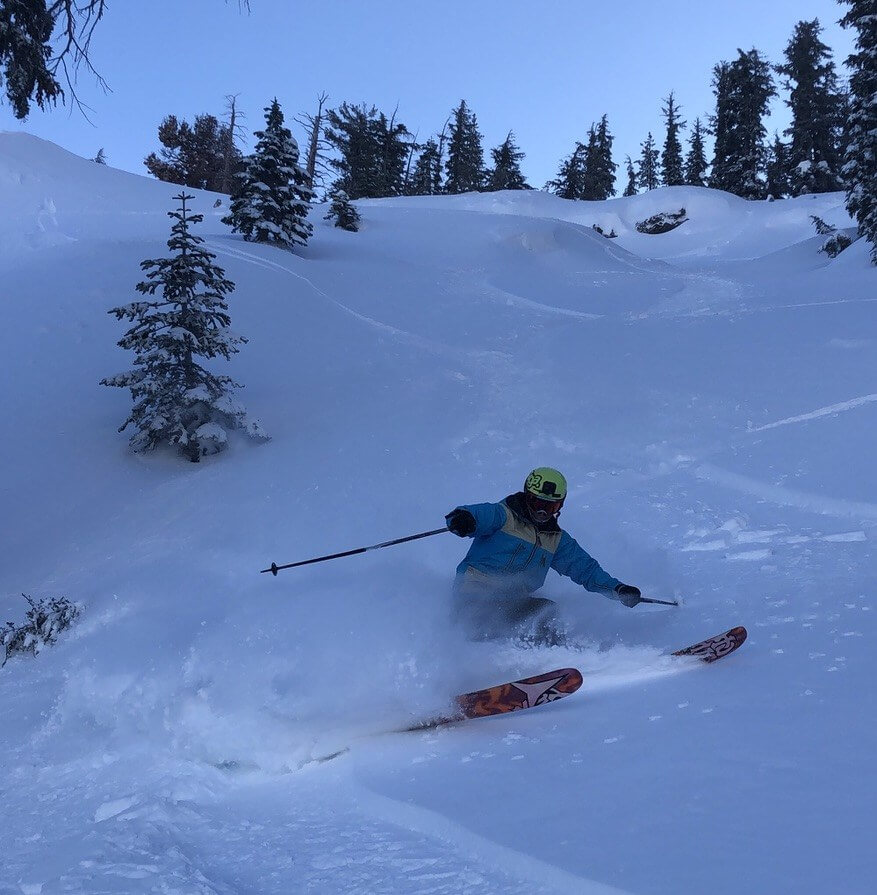


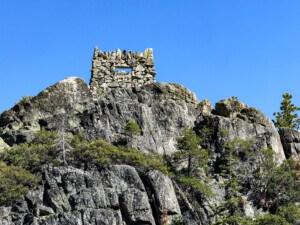

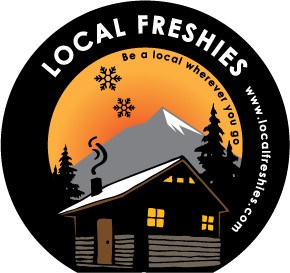
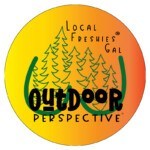
Rub the belly for snow!
I’m rubbing the belly! 🙂
Drink Coronas. Everyone knows Coronas make it snow.
This superstition was around long before the corona virus?
Just bought a 6 pack & working hard to make it snow. 🙂